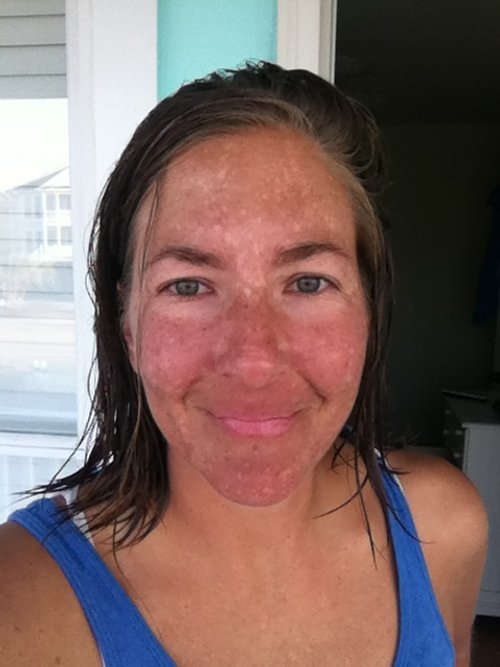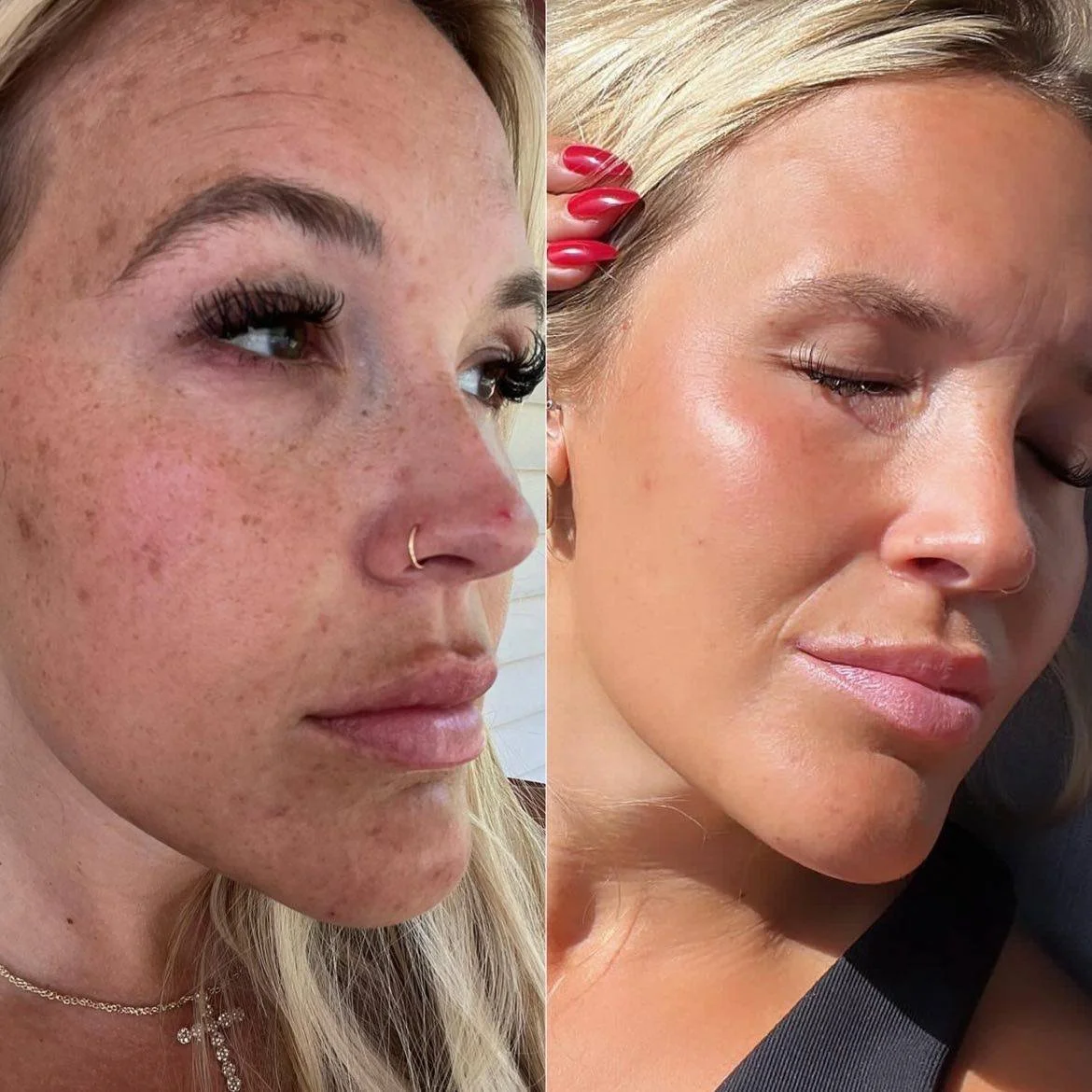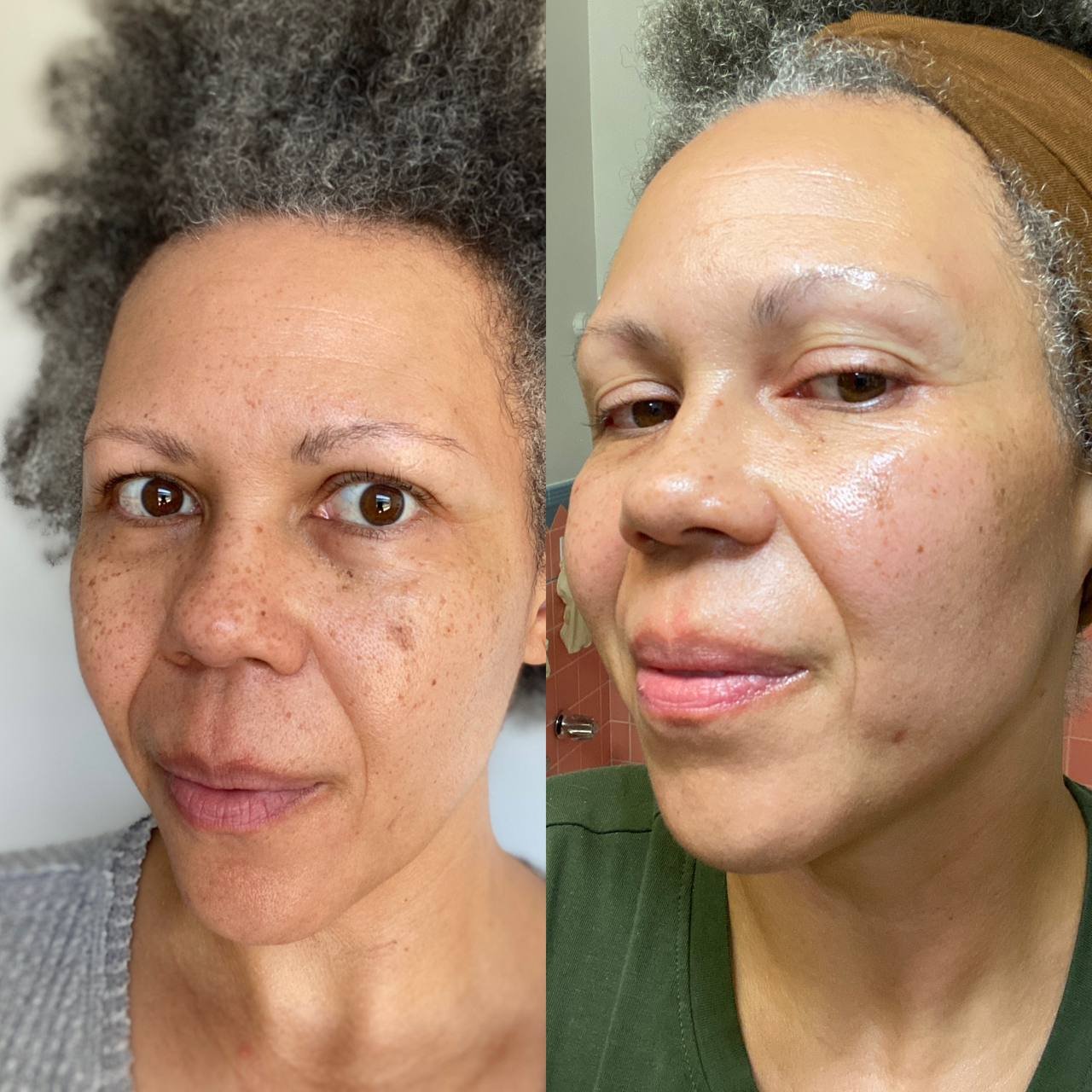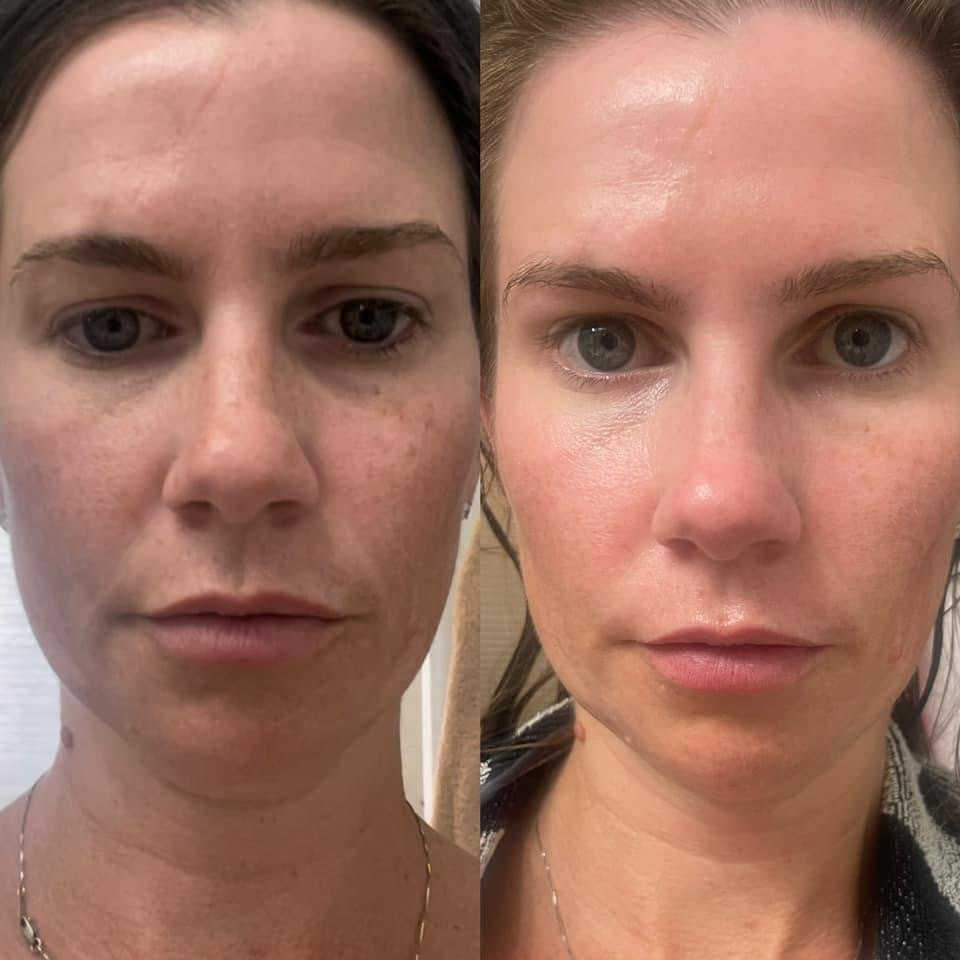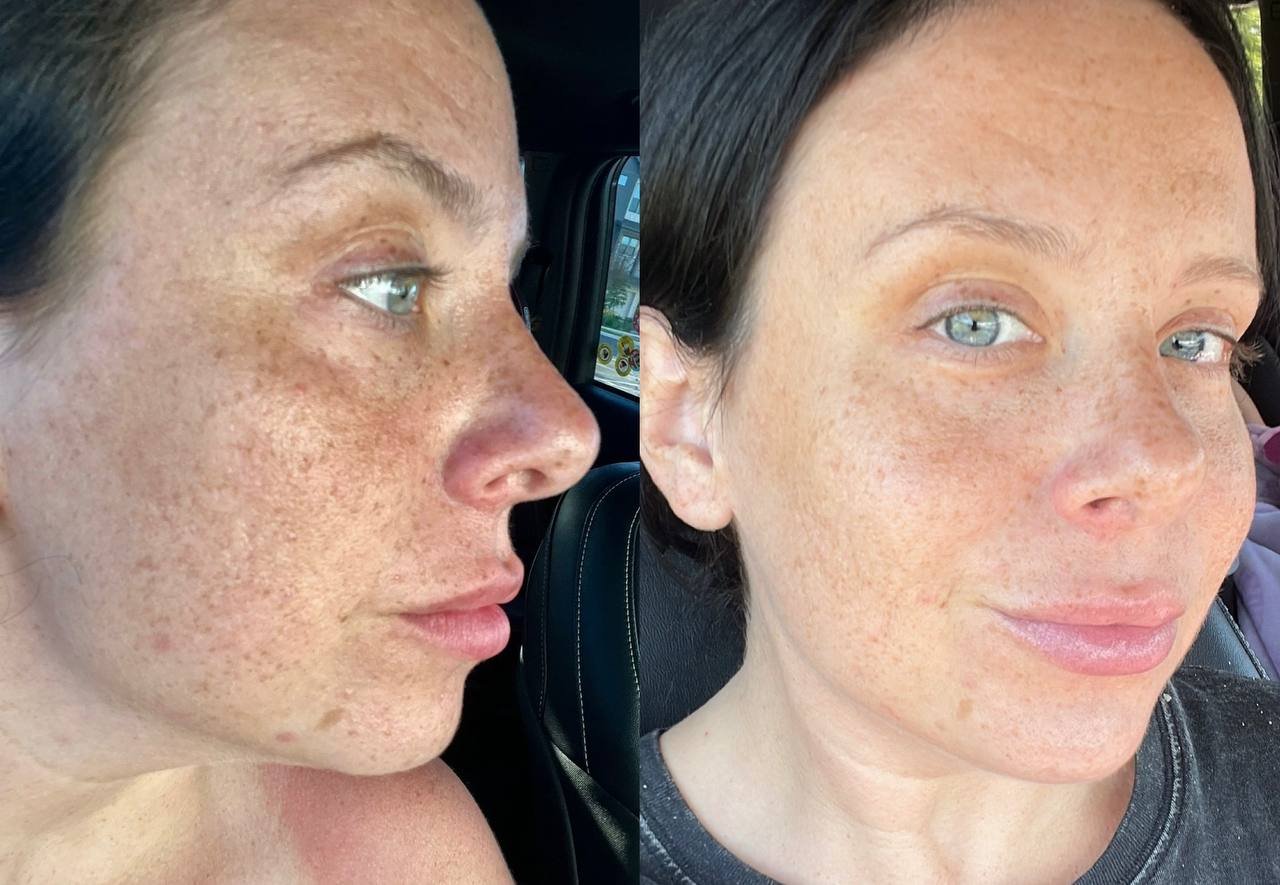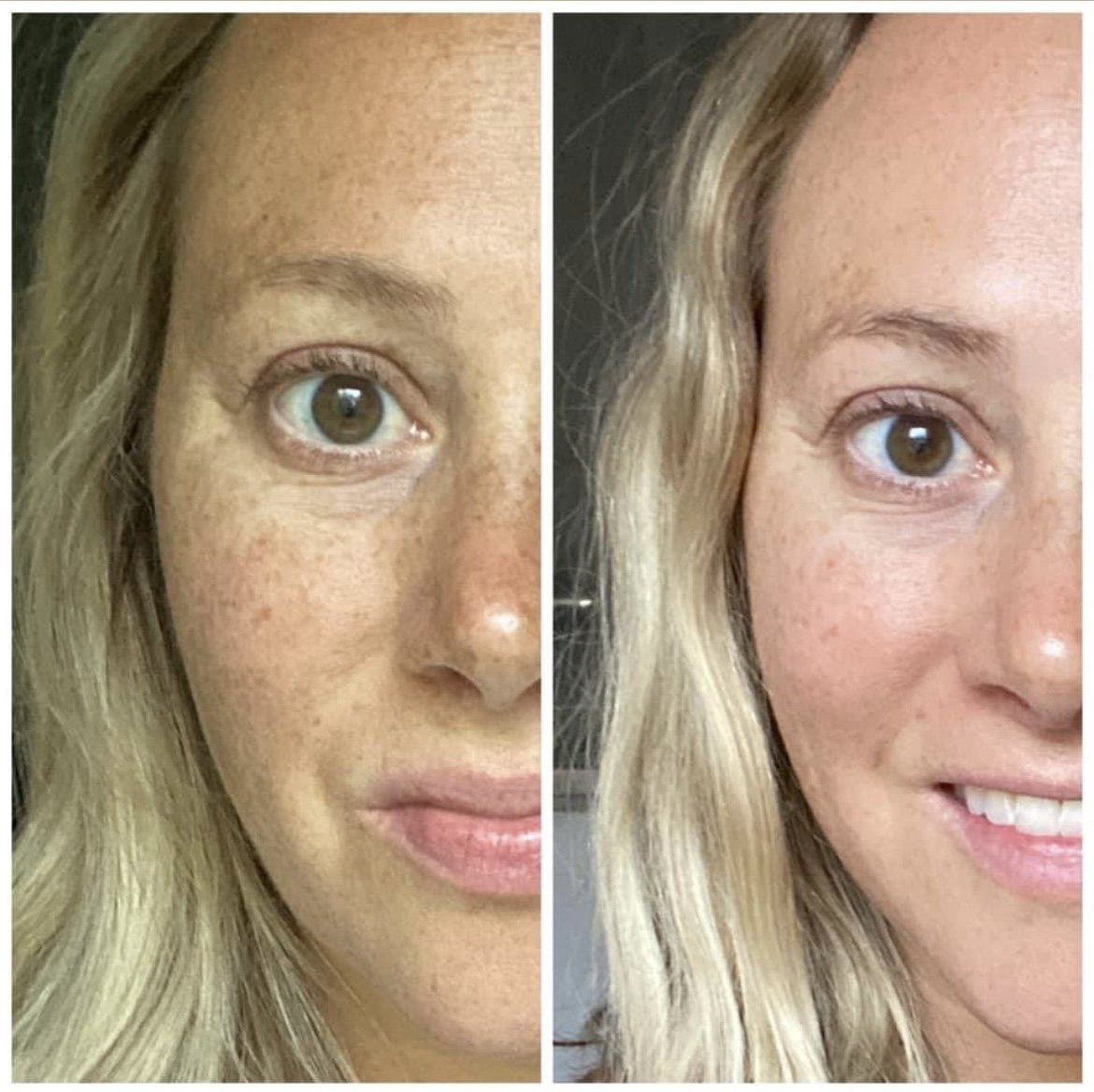The Best Skincare Creams for Melasma + Hyperpigmentation
I USED TO HAVE MELASMA
I used to have severe melasma. It started as a small spot on the side of my nose that appeared out of nowhere, then it spread down the bridge of my nose and across my upper cheeks. It stayed like that for a long time, then spread to eventually cover my entire face.
I HEALED MY SKIN
Once I figured out that what I had was melasma, I started trying all the treatments that were recommended to me, both at home treatments (like turmeric paste, hydrogen peroxide, lemon juice, African black soap, etc) and creams and treatments such as kojic acid, glycolic acid, lasers, peels, etc. I refused to try hydroquinone because I’d heard and seen so many stories about melasma coming back worse from hydroquinone. The potential risks simply weren’t worth it to me.
Hydroquinone isn't safe for long-term use, and once you stop, the melasma often comes back. I questioned the point of starting a treatment that might only provide temporary relief while posing long-term risks.
None of these treatments improved my skin; in fact, some even made my melasma worse. I eventually learned that these harsh treatments were damaging my skin barrier, which contributed to the worsening of my condition.
As I began to educate myself on hormones and skin health, I decided to abandon those aggressive treatments and instead adopted a simple, gentle, and nourishing skincare routine. My skin immediately felt happier and calmer. While this didn’t make the melasma disappear, it prevented it from worsening and allowed my damaged skin barrier to heal, making my skin overall healthier.
In the end, I was able to heal my melasma without using lasers, peels, or bleaching creams. By focusing on healing the imbalances within my body and using only gentle, nourishing skincare, I finally found relief.
MY BEFORE + AFTER
The second photo is from 2016 when my skin healed.
MY SKIN TODAY IN 2024
MY SKIN TODAY IN 2024
NOW I HELP OTHER WOMEN HEAL THEIR SKIN
Once my melasma went away, I decided I wanted to help other women heal their melasma, so I attended Nutritional Therapy Association and got certified as a Nutritional Therapy Practitioner.
This certification is about much more than just nutrition. Nutrition is the foundation, but we also learned about gut health, supplement protocols, hormones, and more.
Since graduating in 2016, I’ve been dedicated to helping women with melasma heal their skin.
MELASMA DOES NOT HAVE TO BE PERMANENT
The most important thing to understand is that, despite what you may have been told, melasma does NOT have to be permanent. It can absolutely be reversed with the right approach.
I often see women following mainstream advice for treating melasma—using lasers, peels, and lightening or bleaching creams. However, these are not permanent solutions and can sometimes backfire, making melasma even darker.
If you’ve been with me for any length of time, you’ve likely heard me say that melasma will not go away and stay away if you’re using harsh products like bleaching creams or undergoing treatments like lasers and peels.
First, these methods often work by suppressing melanin, which might make your skin appear better temporarily. However, this is only a short-term fix, and the melasma will inevitably return because these treatments aren’t addressing the root cause.
Second, bleaching creams, lasers, peels—essentially all the commonly recommended treatments for melasma—are very harsh and can damage the skin barrier, making your skin more sensitive to sun and heat. These treatments strip your skin of its natural oils and leave it vulnerable. When your skin is damaged, it produces more melanin to protect its deeper layers from further harm.
Melanin makes skin darker, but the purpose of melanin is to be protective. It acts like an umbrella, shielding your damaged skin from UV light, blue light, and heat. The more harsh treatments you use, the more irritated and vulnerable your skin becomes, leading to an increase in melanin and darker spots.
What your skin truly needs is gentle, nourishing care to restore it to a healthy state—care that doesn’t irritate it. This way, your skin won’t need to produce excess melanin.
SKINCARE THAT HEALS
I partner with a skincare brand that creates not only gentle and nourishing products but also formulations that are anti-inflammatory and capable of healing the skin.
This company first caught my attention because the people I knew who used their products had incredible results—clear, glowing skin that truly stood out. After months of researching the company and their products, I decided to work with them. The ingredients in their skincare line are unlike anything I’ve seen from other brands, and that’s exactly why they’re achieving such remarkable results.
Oliveda is a game-changer for melasma, hyperpigmentation, aging skin, acne, and virtually all skin types and concerns.
Why This Skincare Is So Effective for Melasma and Hyperpigmentation
Traditional treatments for melasma often involve harsh methods that can damage the skin, leading to increased melanin production and the need to avoid the sun. In contrast, Oliveda is clean, natural skincare that is restorative and healing.
But what about other clean skincare brands that are gentle? Why don't they work for melasma?
Most skincare products are made with about 70% water. If you pick up any skincare product, you’ll likely see water listed as the first ingredient, meaning it makes up the majority of the formula. To keep that water stable, preservatives are added, and then around 5% of active ingredients, like Vitamin C, are included to address specific skin concerns.
For instance, most Vitamin C serums consist mostly of water, preservatives, and some Vitamin C. While water itself isn’t necessarily problematic (though I prefer not to pay for mostly water), the preservatives can be. They often cause skin inflammation.
Oliveda products, on the other hand, do not use water as the base. Instead, they are made with around 70% olive leaf extract, rich in the antioxidant hydroxytyrosol, which is both anti-inflammatory and regenerating. In addition, they contain 25% unrefined, nourishing Arbequina oil and 5% actives like Vitamin C.
This means that 100% of the ingredients in Oliveda products are bioactive and beneficial for the skin, unlike other skincare products where only about 5% of the formula provides active benefits.
The Fastest Way to Heal Melasma
The fastest way to treat melasma is by addressing it from both the inside and the outside simultaneously.
Melasma isn’t caused by the sun alone. While sun exposure and visible light can worsen melasma, they aren’t the root cause.
There are several potential root causes of melasma, including hormonal birth control, copper toxicity, high cortisol from chronic stress, pregnancy, and imbalances in estrogen and progesterone.
One reason I chose to partner with this skincare company is because they share my belief in healing skin conditions from both the outside (with topical skincare) and the inside (with drinkable skincare). This means that with our drinkable skincare, you’re also addressing melasma internally.
All of our internal and topical skincare products are formulated with olive leaf extract and hydroxytyrosol as the base, so you benefit from hydroxytyrosol both inside and out.
Here’s a study showing the benefits of internal olive leaf extract and hydroxytyrosol for melasma:
BENEFITS OF OLIVE LEAF EXTRACT/HYDROXYTYROSOL FOR MELASMA AND HYPERPIGMENTATION
Olive leaf extract/hydroxytyrosol, offers several potential benefits for melasma and hyperpigmentation due to its powerful antioxidant, anti-inflammatory, and skin-protective properties. I encourage you to do your own research but here’s a closer look at the benefits of the antioxidant hydroxytyrosol for your skin.
Antioxidant Protection: Hydroxytyrosol is one of the most potent natural antioxidants. It helps neutralize free radicals that can damage skin cells and contribute to hyperpigmentation. By protecting skin cells from oxidative stress, it may help reduce the severity of melasma.
Anti-inflammatory Effects: Inflammation is a key factor in the development of melasma and other forms of hyperpigmentation. Hydroxytyrosol has strong anti-inflammatory properties, which can help calm the skin, reduce redness, and potentially lessen the appearance of pigmentation.
Inhibition of Melanin Production: Some studies suggest that hydroxytyrosol may inhibit tyrosinase, an enzyme involved in melanin production. By reducing melanin synthesis, it may help lighten dark spots and improve overall skin tone.
Skin Barrier Support: Hydroxytyrosol also promotes skin health by supporting the skin barrier. A strong skin barrier is crucial for preventing further hyperpigmentation and maintaining healthy, resilient skin.
Accelerates Wound Healing: Hydroxytyrosol aids in the skin's repair processes, promoting faster healing of wounds and reducing the risk of scarring.
Supports Cellular Turnover: It encourages healthy cell turnover, which is essential for maintaining smooth, clear, and youthful-looking skin.
Anti-Aging Benefits: The antioxidant properties of hydroxytyrosol can help reduce signs of aging, such as fine lines and wrinkles, which often accompany hyperpigmentation. Healthier, more youthful-looking skin can help improve the appearance of uneven skin tone.
Enhanced Skin Hydration: Olive leaf extract may improve skin hydration, which is essential for maintaining a healthy complexion and preventing dryness that can exacerbate pigmentation issues.
Guards Against Sun Damage: Hydroxytyrosol protects the skin from harmful UV radiation, reducing the risk of sunburn, photoaging, and long-term skin damage, such as hyperpigmentation and skin cancer.
Reduces Sun-Induced Inflammation: Its anti-inflammatory properties help soothe and reduce inflammation caused by sun exposure, preventing further skin damage.
Reduction of Pigmentation: Hydroxytyrosol may directly reduce pigmentation by inhibiting tyrosinase, an enzyme that plays a crucial role in melanin production. By reducing melanin synthesis, it can help lighten dark spots and improve overall skin tone, making it beneficial for managing melasma.
Brightens Complexion: It helps to enhance the skin's natural radiance by reducing oxidative stress, which can dull the complexion.
Incorporating hydroxytyrosol from olive leaf extract into your skincare routine could be beneficial in managing melasma and hyperpigmentation, especially when combined with other skin-nourishing and balancing approaches.
The results from using olive leaf extract-based skincare are incredible and speak for themselves!
Check out these melasma before and after photos
This is the power of removing water as the primary ingredient and using olive leaf elixir as the main component!
WORK WITH ME
I’m always a strong advocate for addressing the root cause of melasma, which is exactly what I teach in my online course, Melasma-Free Method, but I also want my you to find relief sooner than later because I know how difficult Melasma is to deal with + this skincare line is exactly what I’ve been searching for.
If you want to work with me, there are two options:
REVERSING MELASMA VIDEO (free masterclass to learn more about my online course for healing melasma naturally)
Personalized Skincare Recommendations
If you want to get results like these women, simply fill out this SKINCARE CONSULT QUESTIONNAIRE, and I’ll send you customized recommendations best suited to your skin type and concerns.
Everyone’s skin is unique, so I always personalize the results based on your specific needs. This is why I don’t provide general recommendations in a blog post—because not every product is right for every person.
Every single one of our products contains olive leaf extract and hydroxytyrosol, so no matter which product you use, you’ll benefit from the anti-inflammatory properties of olive leaf extract.
SKIN CONSULT FORM


